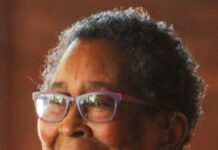 A new study from the National Center for the Study of Privatization in Education at Teachers College of Columbia University, authored by Kfir Mordechay of Pepperdine University and Jennifer Ayscue of North Carolina State University, offers hope that public school education in urban areas may be trending toward increased racial integration.
A new study from the National Center for the Study of Privatization in Education at Teachers College of Columbia University, authored by Kfir Mordechay of Pepperdine University and Jennifer Ayscue of North Carolina State University, offers hope that public school education in urban areas may be trending toward increased racial integration.
The analysis found that some schools in the New York City boroughs of Brooklyn and Queens have seen a reduction in racial segregation while neighborhoods have experienced increased diversity since the early 2000s. From 2000 to 2016, the share of White, school-aged children in these diversifying neighborhoods increased from 11 percent to 29 percent while the combined share of school-aged Black and Latinx children decreased from 87 percent to 70 percent. At the same time, the number of Black students enrolled in neighborhood elementary schools decreased from about 50 percent to about 42 percent while the share of white, Latinx, and Asian students increased.
The share of intensely segregated schools in these diversifying neighborhoods declined from about 91 percent to nearly 83 percent between 2001 and 2015 and the share of hypersegregated schools — or schools that enroll 99-100 percent students of color — decreased from about 46 percent to 41 percent.
“Neighborhoods that have been historically segregated and are now experiencing racial change could provide an opportunity to create more integrated schools if long-standing residents of color are not displaced and excluded from their communities and if new White residents enroll their children in traditional public schools,” said Dr. Ayscue, an assistant professor of education at North Carolina State University. “Proactive policies are needed from both the housing and education sectors in order to ensure that communities and schools do not displace residents of color and transition into becoming predominantly White, but instead achieve and maintain stable integration.”
“It’s critical that teachers and leaders create inclusive learning environments where all students have access to excellent, diverse teachers and rigorous, high-quality curriculum,” Dr. Ayscue added. “Tracking and exclusionary discipline practices are examples of ways that segregation occurs within diverse schools. These are practices that educators need to address in order to create truly integrated schools.”
The full study, “Diversifying Neighborhoods, Diversifying Schools? The Relationship between Neighborhood Racial Change and School Segregation in New York City,” may be downloaded here.










